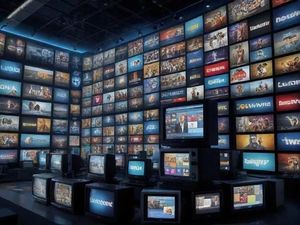On August 25, 2025, the already tense trading relationship between the United States and India took a dramatic turn. Former President Donald Trump, now back in the White House, announced a sweeping 25% tariff targeting Indian oil exports tied to Russian crude. The move, described by the Trump administration as a response to India’s "energy defiance," has sent shockwaves through global markets and diplomatic circles alike.
At the heart of the dispute is India’s continued purchase of discounted Russian oil—a strategy adopted after Western sanctions largely shut Moscow out of the global energy market following the invasion of Ukraine in February 2022. According to Treasury Secretary Scott Bessent, India’s wealthiest families have pocketed an estimated $16 billion in excess profits through what he called "Indian arbitrage": buying Russian oil at a discount and reselling it at global prices.
White House Trade Advisor Peter Navarro didn’t mince words, denouncing the practice as profiteering by India’s "Big Oil lobby." Navarro warned that, in his view, these profits are "indirectly fueling Putin’s war chest," a claim that has further inflamed tensions between New Delhi and Washington.
While public sector refiners like Indian Oil Corporation (IOC), Bharat Petroleum Corporation Limited (BPCL), and Hindustan Petroleum Corporation Limited (HPCL) use Russian crude primarily for domestic consumption, private giants Reliance Industries and Nayara Energy are under particular scrutiny. Analysts have pointed out that Reliance alone saved $570 million in 2025 through its Russian oil strategy, largely by exporting refined products to international markets, as reported by multiple sources including NBC News and Indian Express.
US Vice President JD Vance, in an interview on NBC News’ "Meet the Press," explained the rationale behind the tariffs, referring to them as "aggressive economic leverage." Vance said, "President Donald Trump has applied aggressive economic leverage such as secondary tariffs on India to force Russia to stop bombing Ukraine." He added that these measures are intended to "make it harder for the Russians to get rich from their oil economy."
The Trump administration’s approach has been notably selective. While India has faced harsh criticism and punitive tariffs, China—the world’s largest buyer of Russian crude—has not been similarly targeted. This discrepancy has not gone unnoticed in diplomatic circles, raising questions about the broader strategic calculus at play. According to NBC News, India has repeatedly emphasized that its energy procurement decisions are based on "national interest and market dynamics," a stance echoed by Indian officials in recent weeks.
Vance remained optimistic about the broader geopolitical goals underpinning the tariffs, expressing confidence that the US could help broker an end to the war between Russia and Ukraine. "We believe we’ve already seen some significant concessions from both sides, just in the last few weeks," Vance told NBC News, referencing recent diplomatic engagements following Trump’s meeting with Russian President Vladimir Putin earlier this month.
Yet, the tariffs have exacerbated an already deteriorating relationship between Washington and New Delhi. Since Trump doubled tariffs on a range of Indian goods to a staggering 50%, including the additional 25% duties tied to Russian crude, Indian officials have accused the US of hypocrisy and double standards. External Affairs Minister S Jaishankar, speaking at an event in New Delhi on August 23, 2025, pushed back forcefully against the US critique. "It's funny to have people who work for a pro-business American administration accusing other people of doing business," Jaishankar remarked. He added, "If you have a problem buying oil or refined products from India, don't buy it. Nobody forces you to buy it. But Europe buys, America buys, so you don't like it, don't buy it."
India’s energy calculus has been shaped by the twin imperatives of affordability and security. After Western sanctions isolated Russian oil from much of the global market, Moscow began offering steep discounts to willing buyers. For India—a country with voracious energy needs and a rapidly growing economy—the opportunity was too good to pass up. Officials in New Delhi have insisted that their purchases are legal, transparent, and consistent with their national interests. "India maintains that its energy procurement, including from Russia, is driven by national interest and market dynamics," reported Indian Express.
Despite the mounting pressure, Indian policymakers have shown little sign of backing down. The government’s message has been clear: it will not allow external pressure to dictate its energy strategy. This stance was reinforced during Vice President Vance’s earlier visit to Jaipur on April 22, when he urged India to drop non-tariff barriers, open its markets further, and increase purchases of American energy and military hardware. Vance framed these recommendations as part of a "broader roadmap of deeper ties between the two nations for a ‘prosperous and peaceful’ 21st century."
However, the reality has been far more contentious. The imposition of secondary tariffs—measures that penalize not just direct trade with Russia but also third-party actors like India—marks a significant escalation in the US’s economic statecraft. The White House’s message is unmistakable: as long as India continues to buy Russian oil, it will face consequences in the form of punitive trade barriers.
Critics of the Trump administration’s approach argue that such tariffs risk alienating a key strategic partner at a time when the US is seeking to counterbalance China’s growing influence in Asia. They point out that, by singling out India while sparing China, Washington may inadvertently drive New Delhi closer to Moscow and Beijing—a scenario that could undermine US interests in the region.
Supporters, on the other hand, maintain that tough measures are necessary to cut off Russia’s revenue streams and hasten an end to the conflict in Ukraine. As one senior US official put it, "He tried to make it clear that Russia can be reinvited into the world economy if they stop the killing. But they are going to continue to be isolated if they don't stop the killing."
For now, the standoff shows no signs of abating. As tariffs bite and accusations fly, both sides appear dug in, each convinced of the righteousness of their position. Whether this economic brinkmanship will bring Moscow to the negotiating table—or simply deepen global divisions—remains to be seen. What’s certain is that the world is watching, and the stakes could hardly be higher.




